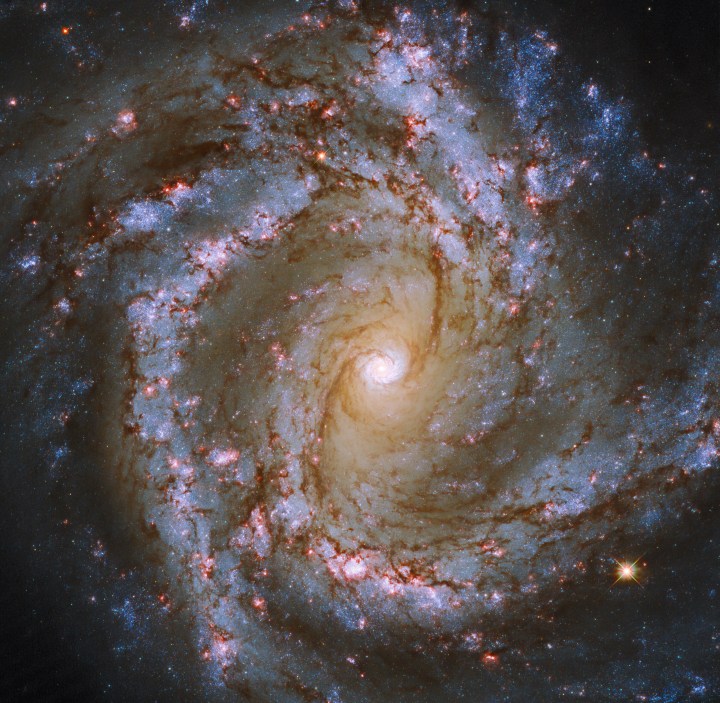
The scientists working with the Hubble Space Telescope have shared another spectacular image of space. This image shows galaxy M61, located in the Virgo Cluster, with its spiral arms and regions of star formation shown in red. The image was created using data from the space-based Hubble, supplemented by data from other instruments like the FOcal Reducer and Spectrograph 2 (FORS 2) camera at the European Southern Observatory’s ground-based Very Large Telescope.
This galaxy is notable in that it appears “face on” to us from Earth — that is, it appears almost completely flat, allowing us an excellent view of the structures of the galaxy. Even though it is located 52 million light-years away, it is still a popular target for astronomical observations because of its face on appearance.
In the red regions in the arms of the galaxy, stars have recently been born when patches of dust and gas have clumped together, then eventually collapsed under the weight of their gravity to form the core of a new star. Stars aren’t only being born in the spiral arms of M61 though. Unseen, in the center of the galaxy around the supermassive black hole at its heart, more pockets of star formation lie.
There is so much star formation going on in this galaxy that it is categorized as a starburst galaxy. This is a phase in which a galaxy is very active in terms of star formation, producing stars at a rate up to ten times the rate of our galaxy, the Milky Way.
Another unusual feature about this galaxy is its unusually high rate of extragalactic supernovae. There have been eight observed supernovae in this galaxy when massive stars have come to the end of their lives and exploded in a huge outpouring of energy. This makes M61 one of the galaxies to host the most known supernovae.



